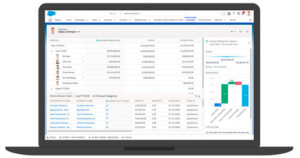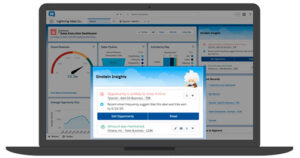
5 Precise Sales Forecasting Techniques for Predictable Revenue
An industry veteran with over 20 years of experience shares expert tips on sales forecasting techniques that lead to accurate numbers and predictable revenue. Don’t plan “when” or “how much” until you read these strategies that work.
Predictable growth, showing consistency year after year, is everything, and forecasting is where it begins. Critical business decisions (budgets, staffing strategy, resource investment, and future earnings) set the North Star. In my over 20 years of sales leadership, I’ve spent hundreds of hours thinking about sales forecasting techniques that lead to predictable revenue and accurate, actionable data. The best sales forecasting techniques answer these two simple questions: How much do we plan to sell? And when will we deliver those numbers?
As much as my team and I work on our forecasts, unpredictable events can change them drastically. Here, I share five truths about sales forecasting that I wish I had known earlier. I hope they help you tackle your forecasting challenges strategically.
To help you sell better from anywhere, our team has also created a comprehensive Sales Forecasting Guide that goes beyond my quick tips here. It answers the most common questions I hear about sales forecasting from sales reps and leaders.
1. Your forecast can change in an instant
Extreme weather, economic crises, and global pandemics can drastically change your forecast. What you thought you knew about expected revenue growth can suddenly change.
When that happens, it’s okay to put the forecast aside. First, I tell my sales leaders and reps to focus on empathy and relationships. This applies to how we treat each other internally as well as how we treat our customers. I learned that if you maintain relationships with customers now, those relationships will help you grow again when the time is right.
I tell my sales leaders and reps to focus on empathy and relationships. I learned that if you maintain relationships with customers now, those relationships will help you grow again.
Although forecasting is difficult in this environment, it is also important. Forecasting is a fundamental resource for planning the months and years ahead. As soon as an extraordinary event occurs, your company’s sales and finance leaders will quickly want to know:
•What does our pipeline look like today?
•What are the best and worst-case scenarios?
•How has the forecast changed from a week or a month ago?
You will want to break down this data by region, leader, rep, product, and more. To make this possible, reps need to double down on keeping all their data up to date. This is easy with tools like Sales Cloud’s integrated Pipeline Inspection. On one screen, you can easily filter opportunities by team or time period and see the latest activity. This helps your team know what’s happening now, what’s likely to happen next, and what data is missing.
Salesforce Pipeline Inspection can refine your pipeline, review metrics, and find opportunities.
2. Sales forecasting in five simple questions
When I started in sales, I knew I needed to include variables in my forecasts. I also knew I needed to calculate how much and when. But I hadn’t yet focused on five important areas: who, what, where, why, and how. These simple questions are what I now tell my teams to focus on when creating their forecasts:
•Who? Sales teams should make forecasts based on their prospects. Depending on whether the prospects are decision-makers or just influencers, the forecast will be more or less accurate.
•What? Forecasts should be based exactly on the solutions you plan to sell. Base them on the problems your prospects have expressed, which your company can uniquely solve.
•Where? Where is the prospect making their buying decision, and where will they use the actual products? Sales teams see greater accuracy when they approach (at least for a visit) the center of the action.
•Why? Why is the potential or current customer considering new services? Is there a major event making them consider it now? Without a driving force, the deal may stall.
•How? How does this prospect make purchasing decisions? If you don’t consider how they have done it in the past, it can be a confusing calculation.
Some of these elements are harder to read than others. But it’s important to keep adjusting the data based on what happens in the field. A high-pressure scenario is not the time to give up on your forecast.
Sales forecasts help the entire business plan to ship products, pay for marketing, and hire employees. With accurate forecasts, the company makes better investments.
Some of these elements are simple facts, while others involve guesses. The more you sell, the better results you will get in forecasts. That’s why it’s a balance between art and science.
3. Negative forecasting can highlight business risk
You can also use your forecast to assess the current risk to your business, also called negative forecasting. For example, one of our clients added a COVID-19 field in Sales Cloud to tag deals and see the impact of the pandemic. The two key benefits they noticed are:
•The sales team can accelerate deals involving a customer who needs a COVID-19-related product.
•The company can track lost or pushed deals due to the crisis.
By making negative forecasts to measure risk, your forecast evolves with your business.
4. Everyone in the company needs sales forecasts, not just the sales team
Starting in sales, I knew I had to deliver accurate forecasts to make my sales leaders happy. Now that I’ve grown in my career, I’ve learned that every department relies on sales forecasts. There isn’t a part of the organization that isn’t affected when forecasts are not good.
For example, sales forecasts help the entire business plan to ship products, pay for marketing, and hire employees. With accurate forecasts, the company makes better investments, like hiring 20 new developers or opening a new sales office in a prime territory.
But if the forecasts are not correct, the company faces challenges in all business functions, from pricing to product delivery and customer service. Everyone relies on the sales organization’s ability to achieve an accurate forecast. So don’t underestimate the importance of your forecast. Even when things change quickly, adjust your guidance to help everyone make better decisions.
5. Technology eliminates old-school forecasting methods
Sales leaders operate in a ridiculously sophisticated and technology-driven environment. The old tricks and back-of-the-napkin predictions of the most confident sales rep can’t compare to today’s sales forecasting technology.
For example, in our own internal implementation of Sales Cloud, we forecast revenue by:
•Monitoring our entire business with a complete view of the total pipeline.
•Tracking our top performers. We see which reps are on track to exceed their goals with up-to-the-minute leaderboards.
•Forecasting for complex sales teams. Overlay Splits allows us to credit the correct amounts to sales overlays by revenue, contract value, and more.
We also use artificial intelligence (also known as predictive analytics) to make our forecasts more accurate.
For example, Sales Cloud Einstein Conversation Insights can track mentions of specific terms during sales calls and then plot trends. This helps managers reconfigure sales strategies to deliver the right products in the right way to prospects and customers.

Sales Cloud Einstein Insights allows sales leaders to quickly and easily see market trends.
A good forecast, whether sales or otherwise, helps you make better decisions about the future. A good sales forecasting technique helps you make better decisions about the future. Should you prepare for a rainy day? Or will it be sunglasses, shorts, and smooth sailing? Become a forecasting pro to put resources and energy in the right places so you can continue thriving.
Source: https://www.salesforce.com/blog/sales-forecasting-techniques/



